
The director of the Festival, who commissioned the sculpture, was Jim Sharman. The granite was donated by Monier Granite, and installation was donated by Tillett Stonemasons. Hand-carving of the letters was by John Glasson.
After the Festival, the Adelaide City Council wrote to the artist (who was living at Bondi Beach in Sydney) demanding that he remove the sculpture immediately from the banks of the River Torrens or it would be removed by Council at his cost. The artist replied offering the sculpture to the City for the nominal sum of $1000, a lot less than the cost of the granite alone. The Council refused and reiterated its demand.
Not knowing what to do with the sculpture, Tipping contacted the stone mason John Glasson, who offered to make it a part of a breakwater a friend of his was building near the town of Robe on the far south coast of South Australia. This seems like a solution, and the artist joked that in the future people would come to see the art wearing mask and snorkel. At this point another letter arrived at Bondi from the director of the Art Gallery of South Australia, Ron Radford, saying that he had selected The Eternal Question for an exhibition of recent sculpture in South Australia. The Gallery would pay for removal from the banks of the River Torrens, and place it on land at the back of the AGSA belonging to the University of Adelaide. This was done. Subsequently, The Eternal Question was donated to the Art Gallery by the artist's mother and step-father, Barbara and William Stewart. Ron Radford wanted the sculpture included in the renovation of North Terrace at the front of the gallery. However the Adelaide City Council had other plans and this idea was rejected.
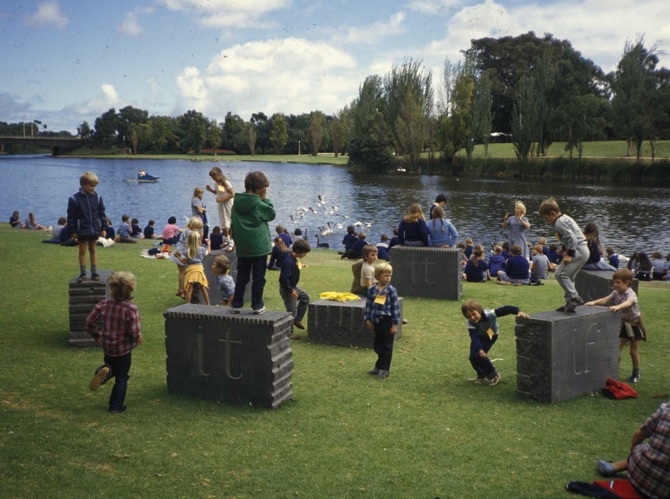
The Eternal Question on the banks of the River Torrens, 1982. Commissioned for the Adelaide Festival of the Arts by the director Jim Sharman. Photographs © Richard Tipping
The Eternal Question is a granite sculpture by Richard Kelly Tipping, made for the Festival of Adelaide in 1982 and installed on the banks of the River Torrens close to the Festival Centre for several months in that year.
The Eternal Question has six large blocks of hewn black granite placed in a circle about seven metres in diameter. Each one-tonne block has two words carved into its sides, saying IS or IT or IF, so that in a circle the blocks make a kind of chant: “Is it if it is? Is if it? It is, if it is.” And so on. The three words stand for the essentials: IT for matter, IS for being, IF for mind.
There is a also central block laying flat which has a spiral carved into its table-like surface, which becomes a question mark. The block is compass-aligned, so that the dot of the question mark faces west, and represents the sun setting into the Gulf. The northern mark is an 'N' drawn as a broken arrow. East is the shape of an emu track. South is the constellation known as the Southern Cross, but better named Waluwara (wedge-tailed eagle) or Girriwa (black swan)
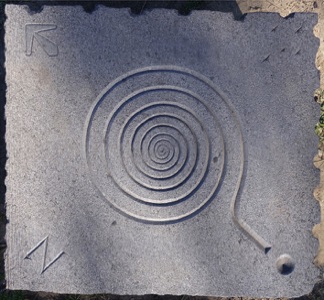
The Eternal Question
Richard Kelly Tipping (Adelaide, born 1949)
1981-82 Adelaide and Sydney
Granite from Black Hill, South Australia
Made with John Glasson, stone mason
Commissioned for the Adelaide Festival 1982
Gift of Barbara and Willliam Stewart through the Government of South Australia Foundation 1984
On loan to Adelaide City Council from the Art Gallery of South Australia since 2003
it is if
is if it
if it is
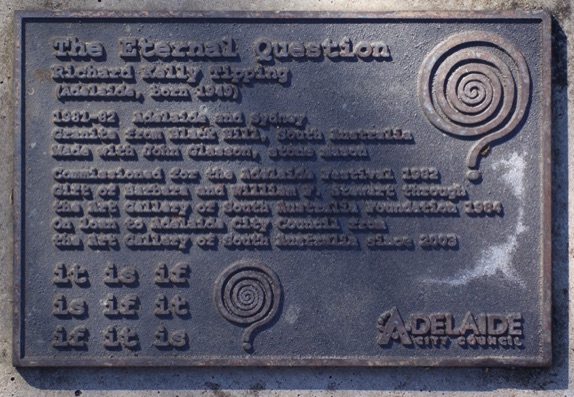
In 2003 the Gallery loaned the sculpture to Adelaide City Council and it was installed in the central city location of Light Square. A brass plaque acknowledging the donors and giving details on the sculpture was installed near to it. In about 2008 local drinkers from the nearby pub began rocking some of the large blocks backwards and forwards until they fell over onto the lawn. The Gallery asked if the artist approved stabilising the circle of blocks with a cement base under each one. He asked that the sculpture be moved to its original location on the banks of the river Torrens. This idea was rejected. Excess cement caused the lawn near to each block to wither. In 2015 the Council asked the AGSA formpermission to improve the ground area around the sculpture with a slate circle. Unfortunately slate sheets were glued to the raw granite surfaces of each block, causing potential damage. However, The Eternal Question looks grounded and in place, and one day it may return to the Riverbank.
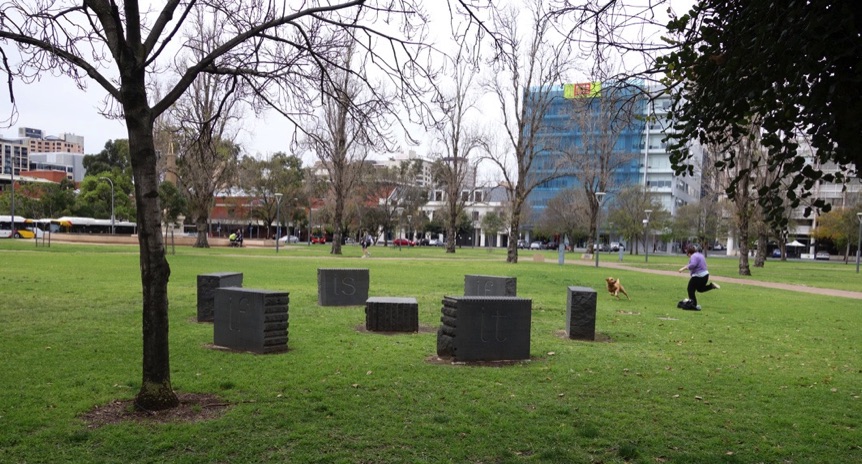
The Eternal Question in Light Square, Adelaide, 2014 Photograph © Richard Tipping
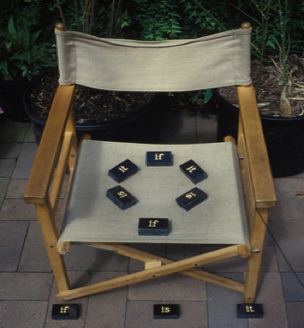
"What If It Is?" Article by Neville Weston, in The Advertiser, Adelaide, March 13th 1982. "Do we realy think before we speak?"
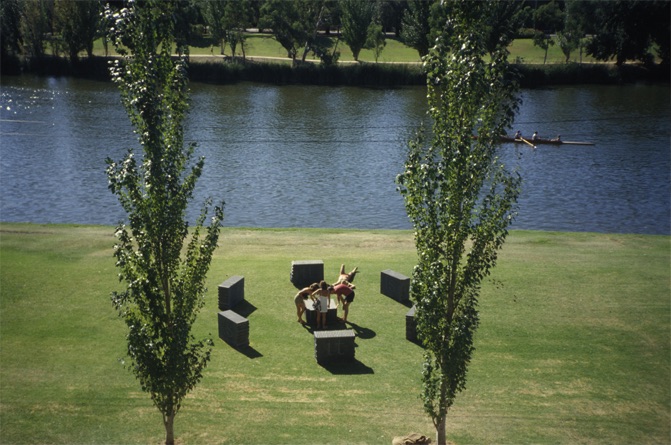
The central block of The Eternal Question
IS IT IF, 1979. Small granite blocks (set of nine) - collection Estate of Brett Whiteley
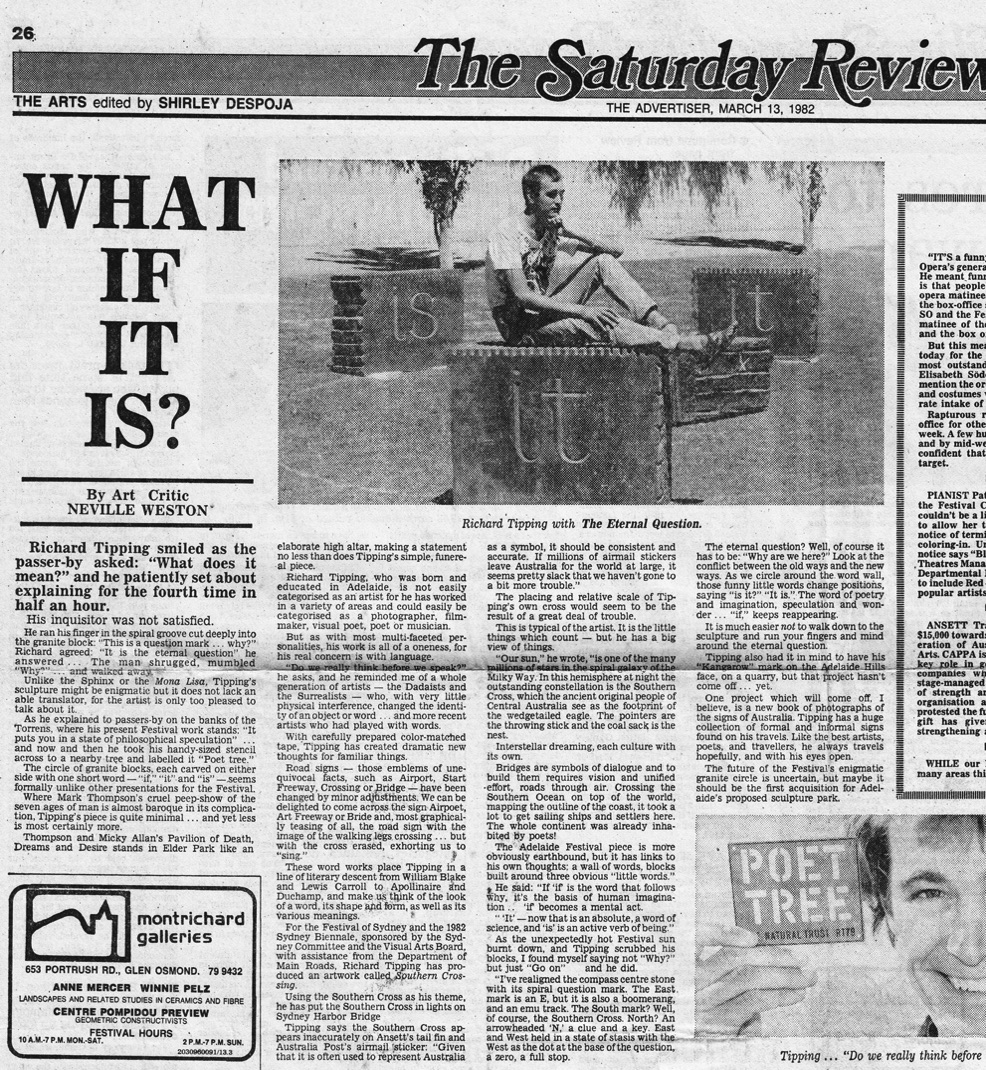
(c) Richard Tipping All text and images are copyright and protected by international legislation. See the Copyright page for more information. For permission to use any of these materials please see Contact page
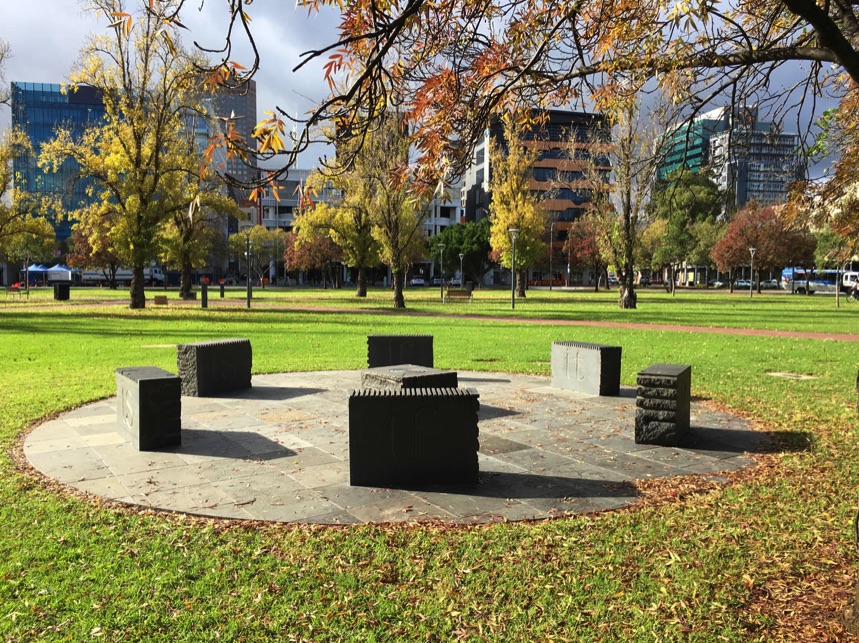
The Eternal Question in Light Square, Adelaide, 2016 Photograph © Richard Tipping
Web links 2022
The British Museum regarding a graphic print of the 'is it if' has a useful description https://www.britishmuseum.org/collection/object/P_2014-7088-8-10